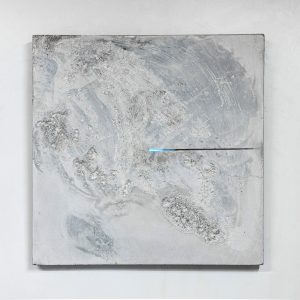Description
Willem Van Hecke was a Belgian artist born in 1893 in Blankenberge and died there in 1976. He was a painter and draughtsman. Self-taught. He started as an impressionist but evolved from 1920 to a personal style with cubist influences and painted navies, landscapes, farmers, and workers. From around 1940, the human figure appears in his work, and he develops personal expressionism. From the press: “Leans towards Western European expressionism, influenced by the magic of the art of the primitive peoples. W.V.H. gives shape to archaic human figures. In these archetypes, he eliminates all that is incidental, creating a tragic masquerade of the displaced, the disenfranchised, and the schizophrenic. His figures look at us with rigidity and bewilderment” and “In the first place tonalist, he creates wondrous compositions of small size, detached from nature, but poignant by their expressionist character. Along several sides, his painting is related to that of Constant Permeke but without the latter’s grandeur. On the other hand, his paintings are intimist, full of simple and popular poetry”. Work in the Museums of Ghent and Ostend. Mentioned in the Lexicon of West Flemish Artists II, BAS I, and Two centuries of signatures of Belgian artists. (source: PIRON)
1947, Centre for Fine Arts, Brussels
1950, Municipal Casino, Ostend
1954, Galerie Veranneman, Kortrijk
1959, Municipal Casino Blankenberge (retrospective on the occasion of his 65th birthday)
1963, Casino Knokke
1963, Galerie Vyncke-Van Eyck, Ghent
1967, Galerie Veranneman, Brussels
1969, Museum of Fine Arts, Ostend
1970, Museum Dhondt-Dhaenens, Deurle
2008, Cultural Center De Benne, Blankenberge, The collection of his life companion Rachel Zimmerman.[1]
Further works can be found in the town hall of Blankenberge and the Kunstmuseum aan Zee in Ostend.








